Knowing to dispose of fire extinguishers is important for any business or organization. Not only does it provide safety and compliance with laws, but it also helps keep the environment clean and free from contaminants associated with fire extinguisher disposal.
Regarding fire safety, having a good quality fire extinguisher in the right place at the right time can be critical. But when you need to dispose of an old or used-up extinguisher, some important steps must be taken. In this blog post, You will learn in detail how to dispose of fire extinguishers.
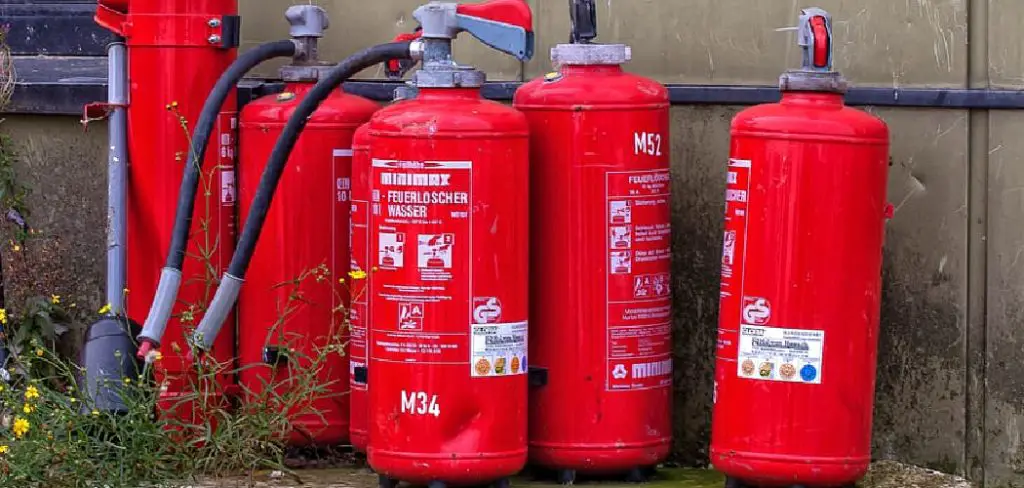
Importance of How to Dispose of Fire Extinguishers
It is important to properly dispose of fire extinguishers since they can risk public safety if handled or stored incorrectly. Here are some reminders about the importance of proper fire extinguisher disposal:
- Fire extinguishers contain hazardous and toxic materials, such as carbon dioxide, that can be dangerous if not disposed of appropriately. Improper storage and disposal may lead to accidental exposure of these materials and cause harm to people.
- Improper disposal can also contaminate the environment, leading to air, water, or land pollution. Disposing of fire extinguishers in a landfill or other contaminated area is not recommended since it increases the risk of contamination.
- Incorrect disposal may also be illegal in certain areas and can result in fines or other penalties.
- Fire extinguishers are designed to be used only once, so disposing of them properly will help ensure their efficacy and prevent reusing them after discharge.
- Disposing of a fire extinguisher correctly also helps protect against potential fires since it reduces the risk of an improperly discharged fire extinguisher causing a fire.
- Finally, proper disposal of fire extinguishers helps maintain safety standards and avoids costly cleaning or repair services due to improper storage or disposal methods.
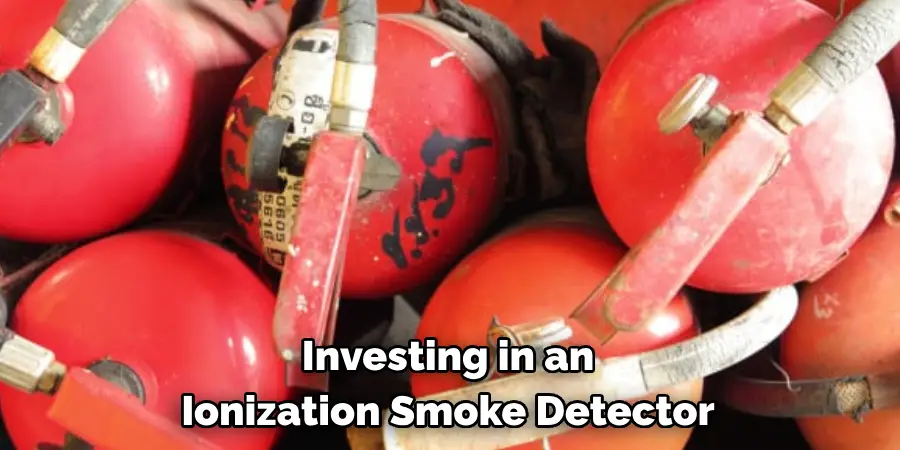
It is important to remember that disposing of a fire extinguisher should always be done per local regulations and guidelines, and if necessary, seek professional help from certified technicians.
Step-by-Step Instructions for How to Dispose of Fire Extinguishers
Step 1: Inspect Your Fire Extinguisher
Before you start the process of disposing of your fire extinguisher, it is important to inspect it first. Examine the outer and inner cylinder for any signs of rust or corrosion. If there are any signs of damage, dispose of the fire extinguisher immediately, as it may be a safety hazard if used in an emergency.
Step 2: Identify Your Fire Extinguisher Type
The type of fire extinguisher you have will determine how it should be disposed of. Some types of fire extinguishers require special disposal processes, so make sure to identify your specific type before continuing. It is important to remember that different states may have different regulations for disposing of fire extinguishers, so consult your local government agency before proceeding.
Step 3: Contact a Disposal Facility
Once you have identified the type of fire extinguisher, contact a facility that specializes in disposal. This facility will be able to provide you with more information on how to properly dispose of your fire extinguisher, as well as any fees associated with the process.
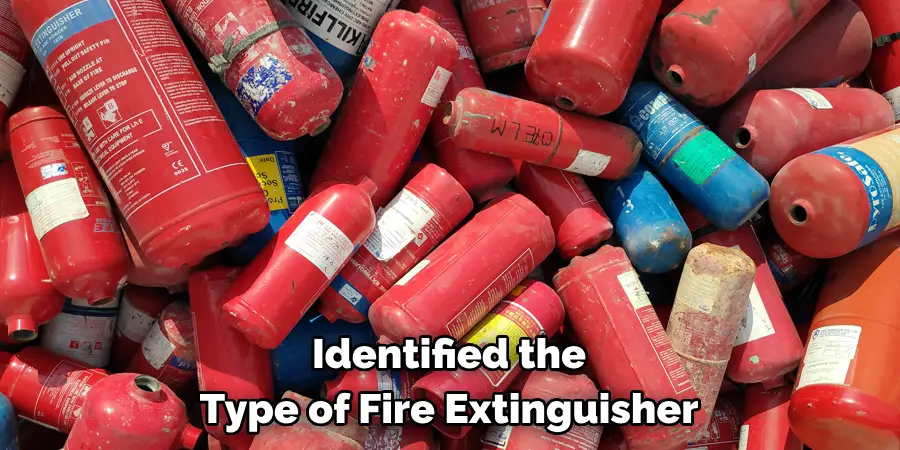
Step 4: Empty the Fire Extinguisher
If you can, empty the fire extinguisher before disposing it. This can be done by getting a professional to do it for you or by discharging the contents into an approved container. Make sure the area is well-ventilated if you decide to discharge the contents yourself, and wear protective gear such as safety glasses and gloves.
Step 5: Recycle or Dispose of Fire Extinguisher Parts
If you can, recycle any parts that can be salvaged from the fire extinguisher. This includes the metal cylinder, nozzle, valve, and cap. Once all the parts have been recycled or disposed of properly, dispose of any remaining material in an approved landfill.
Once you have followed the above steps, take your fire extinguisher and any remaining parts to an approved disposal facility. Make sure to provide proof that you have emptied the fire extinguisher and documents from the recycling or disposal facility where applicable.
Step 6: Complete the Disposal Process
Once you have taken your fire extinguisher to the disposal facility, provide any necessary information and fees. The disposal process should be completed within 48 hours of arriving at the facility.
After disposing of your fire extinguisher, follow up with your local government agency to ensure the process is done correctly. This will also help you avoid potential fines or penalties for improper disposal.
Step 7: Get a New Fire Extinguisher
Once the disposal process has been completed, replace your old fire extinguisher with a new one. Check the expiration date of your new fire extinguisher and inspect it thoroughly before using it.
When storing fire extinguishers, make sure they are placed in a location that is easily accessible. Also, keep them away from any heat sources, as this can reduce their effectiveness.
Following these steps will help ensure that disposing of your fire extinguisher is done safely and effectively. Knowing how to dispose of a fire extinguisher properly can also help prevent potential accidents or injuries in an emergency.
Safety Tips for How to Dispose of Fire Extinguishers
- Always contact your local fire department for advice on properly disposing of the extinguisher.
- Never attempt to open or tamper with a fire extinguisher, as it may contain hazardous materials that professionals must handle. It is best to have the local fire department do this for you so that they can safely and properly dispose of the unit in an environmentally friendly manner.
- Never throw away or recycle fire extinguishers. This is a hazardous waste that must be properly disposed of according to your local laws and regulations.
- When transporting the fire extinguisher, it should be done carefully in a secured vehicle to ensure its safety and prevent any accidental discharge of the pressurized material inside the unit.
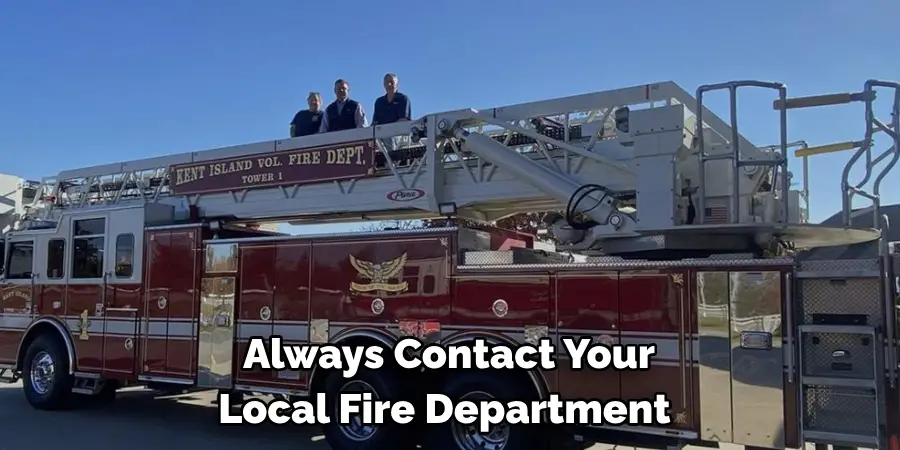
- When disposing of a fire extinguisher, wear all necessary protective gear, such as gloves and eye protection, to protect yourself from potential airborne particles or hazardous materials associated with the pressurized material inside the unit.
- Depending on your area’s regulations, you may need to contact a waste management specialist for advice on how best to dispose of the fire extinguisher.
Following these simple guidelines will help ensure that you can safely and properly dispose of your fire extinguisher when the time comes.
What Are the Different Types of Fire Extinguishers?
Fire extinguishers come in a variety of shapes, sizes, and materials. The most common are:
- ABC Dry Chemical Fire Extinguisher: Multi-purpose fire extinguishers can be used on Class A, B, and C fires. It is the most widely used type for general purposes.
- Carbon Dioxide (CO2) Fire Extinguisher: This type of extinguisher is ideal for Class B and C fires that involve electrical equipment. It works by cutting off the oxygen supply to the fire, thus smothering it.
- Water Mist Fire Extinguisher: This extinguisher most effectively controls Class A fires. It uses a fine mist of water droplets, which helps to smother the flames.
- Foam Fire Extinguisher: This type of extinguisher is ideal for Class A and B fires. It forms a foam layer over the burning material, smothering the flames.
No matter what type of fire extinguisher you have, it’s important to dispose of them properly when they are no longer effective or if they expire.
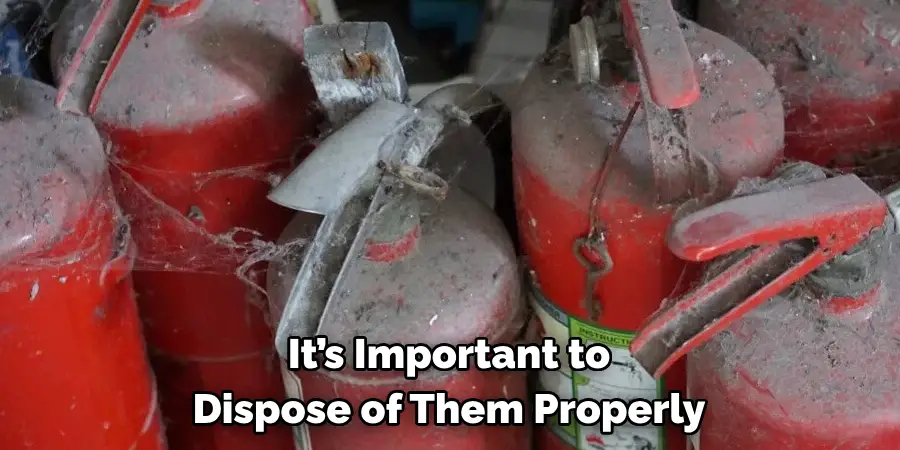
Should You Call a Professional for Help in Disposing of Your Fire Extinguisher?
If you feel overwhelmed by the thought of disposing of a fire extinguisher, seek professional help. A professional can provide valuable advice on safely and effectively disposing of your extinguisher according to regulations and local laws. Sometimes, they may even come out and do the job for you. Not only that, but professional technicians can also inspect your fire extinguisher and determine if it is still in working condition.
If the extinguisher needs to be serviced or replaced, they will know what service is needed and if a new extinguisher should be purchased. Whether you decide to do the disposal yourself or call a professional for assistance, it’s important to remember that the safety of your home and family should always come first! Be sure to follow all regulations and local laws regarding fire extinguisher disposal.
What Are the Best Methods for Disposing of a Fire Extinguisher?
It is important to dispose of fire extinguishers for safety and environmental reasons. Depending on the type of extinguisher, there are different disposal methods.
- Dry Chemical Extinguishers: Dry chemical extinguishers use monoammonium phosphate, sodium bicarbonate, or potassium bicarbonate as their primary agent. These extinguishers must be discharged before disposal, which is best done by a certified fire safety professional. Once empty, they are suitable for recycling or disposal per local regulations.
- CO2 Extinguishers: Carbon dioxide (CO2) extinguishers use pressurized CO2 gas as the primary agent and should also be discharged by a certified fire safety professional before disposal. The empty cylinders can then be recycled or disposed of under local regulations.
- Wet Chemical Extinguishers: Wet chemical extinguishers contain potassium acetate-based solutions and should not be discharged before disposal. These extinguishers must be returned to a professional fire equipment company for proper recycling or disposal.
- Water and Foam Extinguishers: A certified fire safety professional can discharge water and foam extinguishers before disposal, but you should check with local regulations first. Once the cylinders are empty, they may be recycled or disposed of according to local guidelines.
No matter your fire extinguisher, you must follow proper disposal methods for safety and the environment. If you have questions about proper disposal, contact your local fire extinguisher supplier or service company for assistance.

Conclusion
In conclusion, knowing how to dispose of fire extinguishers properly is important. Fire Extinguishers are an essential tool for preventing fires and helping people stay safe in hazardous situations, but proper disposal is key when their useful life has ended. Before disposing of a fire extinguisher, empty the vessel and ensure all parts are intact and out of reach of children.
After that, you can contact your local hazardous waste collection agency or a recycling center to dispose of and reduce environmental impact properly. Reading this post has helped you learn how to dispose of fire extinguishers. Make sure the safety precautions are carried out in the order listed.
